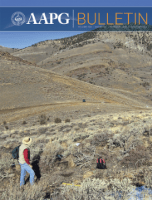
AAPG BULLETIN
Scope & Guideline
Shaping the dialogue in geology and energy engineering.
Introduction
Aims and Scopes
- Petroleum Geology and Exploration:
Focused on the study of petroleum systems, including source rock evaluation, migration pathways, and accumulation mechanisms. The journal covers both conventional and unconventional reservoirs, facilitating a deeper understanding of hydrocarbon exploration. - Geochemical and Petrophysical Characterization:
Emphasizes the integration of geochemical analyses with petrophysical properties to evaluate reservoir quality and performance. This includes studies on organic geochemistry, fluid migration, and reservoir simulations. - Sedimentology and Stratigraphy:
Explores sedimentary processes and stratigraphic frameworks that influence reservoir development. This includes the analysis of depositional environments, sequence stratigraphy, and the impact of geological history on current petroleum systems. - Geomechanics and Reservoir Behavior:
Investigates the mechanical properties of geological formations and their influence on fluid flow and reservoir performance. This includes studies on stress states, fracture networks, and diagenetic processes. - Innovative Exploration Technologies:
Utilizes advanced technologies such as machine learning, seismic inversion, and high-resolution imaging to enhance exploration and reservoir characterization. The integration of data analytics is a growing focus to improve decision-making in resource assessment.
Trending and Emerging
- Unconventional Resource Development:
There is a significant increase in research focusing on unconventional resources such as shale gas and tight oil. This includes advanced techniques for characterization, production optimization, and the study of geomechanical properties. - Sustainability and Carbon Storage Solutions:
Emerging themes around carbon capture and storage (CCS) are gaining momentum, with a focus on geological assessments for effective carbon sequestration and the potential for utilizing depleted reservoirs for storage. - Machine Learning and Data Analytics:
The integration of machine learning and artificial intelligence in geological studies is rapidly increasing. Research is focusing on predictive modeling, automated data interpretation, and enhanced reservoir characterization, showcasing the potential of big data in geology. - Geomechanical and Fluid Dynamics Studies:
There is a growing emphasis on understanding the geomechanical behavior of rocks in relation to fluid dynamics, particularly in the context of hydraulic fracturing and reservoir management. - Paleoenvironments and Their Impact on Hydrocarbon Accumulation:
Research exploring the influence of paleoenvironmental factors on current hydrocarbon systems is trending, highlighting the importance of historical geological contexts in resource evaluation.
Declining or Waning
- Traditional Geophysical Methods:
There appears to be a waning interest in conventional geophysical methods, such as basic seismic reflection techniques, as newer methods incorporating machine learning and advanced imaging technologies gain traction. - Basic Hydrocarbon Reservoir Studies:
Research focusing solely on conventional hydrocarbon reservoirs without an integrated approach is becoming less prominent. The trend is moving towards interdisciplinary studies that consider geochemistry, geomechanics, and advanced modeling. - Historical Petroleum Systems Analysis:
While historical analyses of petroleum systems have been essential, there is a noticeable decline in papers dedicated exclusively to this area. Current research emphasizes predictive modeling and real-time data integration over retrospective studies. - Geological Mapping without Advanced Techniques:
There is less emphasis on traditional geological mapping methods that do not incorporate modern technologies like digital mapping, 3D modeling, or GIS applications, as the field moves towards more sophisticated approaches.
Similar Journals
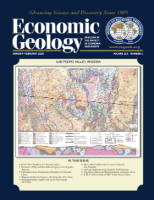
ECONOMIC GEOLOGY
Leading the Way in Earth and Planetary SciencesECONOMIC GEOLOGY, published by the Society of Economic Geologists, Inc., is a premier journal dedicated to the field of economic geology, geochemistry, petrology, geology, and geophysics. With a significant legacy dating back to 1905 and converging into 2024, this journal has established itself as a leading source of research and knowledge in the geosciences, recognized for its high-quality, peer-reviewed articles that reflect the latest advancements in the discipline. Having achieved an impressive impact factor and categorized in the top Q1 quartiles, it ranks among the foremost journals in various related fields, including Earth and Planetary Sciences—where it particularly excels in geophysics (Rank #5) and geochemistry (Rank #6). Although it currently does not offer open access options, its rigorous publication standards ensure that the research disseminated significantly contributes to the understanding and exploration of geological resources. This journal is essential reading for researchers, professionals, and students who seek to deepen their knowledge and stay at the forefront of economic geology.
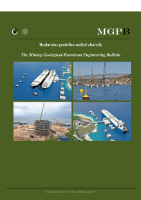
Rudarsko-Geolosko-Naftni Zbornik
Exploring Innovations in Geology and EnergyRudarsko-Geolosko-Naftni Zbornik, the esteemed journal published by the University of Zagreb's Faculty of Mining, Geology and Petroleum Engineering, serves as a vital platform for advancing knowledge in the fields of Earth sciences, energy, and geology. With an ISSN of 0353-4529 and an E-ISSN of 1849-0409, this open-access journal has been disseminating high-quality research since 1989, contributing significantly to scientific discourse in Croatia and beyond. As of 2023, it holds an impressive categorization in various quartiles, notably achieving Q2 in Earth and Planetary Sciences and Q3 in several related domains, showcasing its relevance and impact within the academic community. The journal's commitment to quality is reflected in its Scopus rankings, placing it in competitive positions across diverse disciplines. Researchers, professionals, and students alike will find invaluable resources and insights that foster innovation and collaboration in their respective fields, making Rudarsko-Geolosko-Naftni Zbornik an essential read for those dedicated to exploring the complexities of natural resources and environmental challenges.
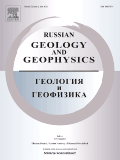
Russian Geology and Geophysics
Advancing Earth Sciences through Rigorous ResearchRussian Geology and Geophysics is a seminal journal published by GEOSCIENCEWORLD that plays a pivotal role in the dissemination of vital research within the realms of Earth-Surface Processes, Geology, and Geophysics. With an ISSN of 1068-7971 and an E-ISSN of 1878-030X, this journal has witnessed a continuous evolution since its convergence in 2007 and is poised to thrive through 2024. While it is not an Open Access journal, it is recognized for its significant contributions to the academic community, holding a respectable Q2 ranking in Earth-Surface Processes and Q3 rankings in both Geology and Geophysics as of 2023. The journal’s impact factors align it within competitive quartiles, marking it as an essential resource for researchers and professionals seeking to stay at the forefront of geological and geophysical sciences. By publishing high-quality peer-reviewed articles, the journal fosters an environment of knowledge sharing and innovation, making it indispensable for students, practitioners, and scholars alike who are dedicated to advancing our understanding of Earth's complex systems.
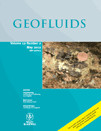
GEOFLUIDS
Championing Open Knowledge in Geoscience ResearchGEOFLUIDS, published by WILEY-HINDAWI, is an esteemed open-access journal dedicated to advancing the field of Earth and Planetary Sciences since its inception in 2001. With an ISSN of 1468-8115 and E-ISSN 1468-8123, the journal has become increasingly accessible, allowing for broader dissemination of research findings since adopting an open-access model in 2017. The journal has established itself within the academic community, achieving a Scopus rank of #86 in the domain of General Earth and Planetary Sciences, placing it in the 56th percentile, and garnering a Q3 category classification as of 2023. GEOFLUIDS serves as a platform for interdisciplinary exchange of ideas and findings—encouraging contributions that explore fluid dynamics in geological systems and their implications for natural resources and environmental management. Researchers, professionals, and students alike are invited to contribute to and engage with the latest research in this growing field, further enhancing the journal's role in shaping the future of Earth science research.
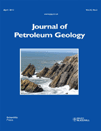
JOURNAL OF PETROLEUM GEOLOGY
Uncovering the Secrets Beneath Our FeetJOURNAL OF PETROLEUM GEOLOGY, published by WILEY, is a prestigious peer-reviewed journal that serves as a vital platform for advancing knowledge in the fields of Earth and Planetary Sciences, Energy Engineering, and Geology. Established in 1978, this journal has cultivated a significant impact, reflected in its 2023 Q2 category rankings across multiple disciplines including Fuel Technology and Geology. Notably, it holds a commendable position in Scopus rankings, marking its importance with a 68th percentile in Earth and Planetary Sciences - Geology. While the journal operates under a traditional subscription model, its extensive repository of research articles facilitates crucial discussions and innovations among researchers, professionals, and students alike. The JOURNAL OF PETROLEUM GEOLOGY is pivotal for those seeking to explore and contribute to the evolving landscape of petroleum geology, offering insights that are essential for both academic and applied science domains.

SPE RESERVOIR EVALUATION & ENGINEERING
Elevating Standards in Energy Engineering and GeologySPE RESERVOIR EVALUATION & ENGINEERING, published by the Society of Petroleum Engineers, is a leading academic journal that plays a pivotal role in the fields of energy engineering and geology. With a notable Q2 ranking in Energy Engineering, Fuel Technology, and Energy (Miscellaneous), as well as a Q1 ranking in Geology, this journal is recognized for its high-quality, peer-reviewed research contributions that enhance our understanding of reservoir evaluation and engineering practices. Since its inception in 1999, the journal has aimed to disseminate innovative techniques and methodologies applicable to both academia and industry. Available in both print (ISSN: 1094-6470) and online (E-ISSN: 1930-0212) formats, it ensures wide accessibility to its content even as it embraces Open Access options for select titles. Researchers, professionals, and students alike can benefit from the rich repository of technical papers, case studies, and reviews, all designed to advance knowledge and applications in the ever-evolving energy sector.

Mineralogical Journal-Ukraine
Fostering inclusive access to vital mineralogical findings.Mineralogical Journal-Ukraine is a key academic publication dedicated to advancing the field of mineralogy and geochemistry, under the esteemed auspices of the M.P. Semenenko Institute of Geochemistry, Mineralogy & Ore Formation of NAS Ukraine. Since its inception in 2019, this journal has established itself as an essential resource for researchers and professionals engaged in the study of energy, fuel technology, and the earth sciences, despite its present rankings reflecting a developing impact within these specific categories on Scopus. Published in Ukrainian and available in both print and online formats, the journal not only aims to disseminate high-quality research but also encourages inclusive access to vital findings in mineral exploration, petrology, and geochemical processes. With a commitment to excellence and an expanding scope of research, Mineralogical Journal-Ukraine stands as a pivotal platform for innovation and collaboration among scientists striving to understand the complexities of mineral formation and ore deposits.

Interpretation-A Journal of Subsurface Characterization
Transforming Subsurface Exploration Through Scholarly ExcellenceInterpretation: A Journal of Subsurface Characterization is a premier academic journal dedicated to advancing the methodologies and technologies integral to the characterization of subsurface environments. Published by the Société de l'Exploration Geophysicists (SEG), this journal serves the fields of geology and geophysics, reflecting its critical role in the intersection of these domains. With an h-index that underscores its scholarly impact and its ranking in the Q2 category for both Geology and Geophysics, Interpretation is recognized for publishing high-quality, innovative research that offers valuable insights and solutions to contemporary challenges in subsurface exploration. Since its inception in 2013, the journal has quickly become essential reading for researchers, professionals, and students alike, providing open access to a wealth of knowledge fostering collaboration and advancement within the geoscience community. Featuring a comprehensive range of studies, methodologies, and reviews, Interpretation is integral for professionals striving to enhance their understanding of subsurface dynamics and impacting areas such as resource management, environmental conservation, and hazard assessment.

Moscow University Geology Bulletin
Connecting Scholars in the Quest for Geological TruthsMoscow University Geology Bulletin, published by SPRINGER INT PUBL AG, is a prominent platform for disseminating critical research in the field of Earth and Planetary Sciences. With an ISSN of 0145-8752 and an E-ISSN of 1934-8436, this journal is well-regarded for its contributions to diverse geological studies and interdisciplinary advancements that shape our understanding of the planet. The journal has established itself in the academic community, particularly noted for its ranking in the Q3 category within Earth and Planetary Sciences as of 2023. Despite its limited open-access options, the Moscow University Geology Bulletin remains an essential resource for researchers, professionals, and students through its well-curated articles and synthesis of geoscientific knowledge. With annual volumes converging from various years, including significant years like 2012 to 2024, it aims to uphold its mission of fostering scholarly dialogue and innovation in the geosciences.

Lithosphere
Exploring Earth's Secrets, One Study at a Time.Lithosphere, published by GEOSCIENCEWORLD, is a premier open access journal that has been at the forefront of geological research since its inception. With the ISSN 1941-8264 and the E-ISSN 1947-4253, this journal serves as a vital resource for researchers, professionals, and students interested in Earth and planetary sciences, particularly in the field of geology. Its impressive ranking of Q2 in the 2023 category indicates its vital role in disseminating high-quality, impactful research. The journal’s commitment to open access since 2018 enhances its reach, providing global accessibility to cutting-edge studies that span a diverse range of geoscientific topics, from tectonics to sedimentology. With Scopus Rank #88 out of 321 in Earth and Planetary Sciences, it offers a strong platform for scholars to share their findings and engage with the latest advancements in the discipline. As the journal continues its convergence from 2009 to 2024, Lithosphere remains a crucial publication for those striving to deepen their understanding of Earth's systems.